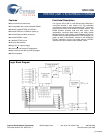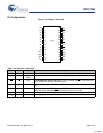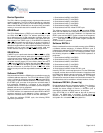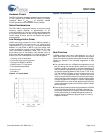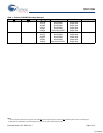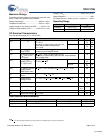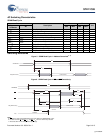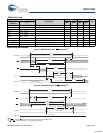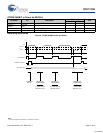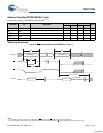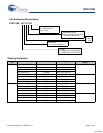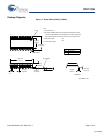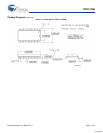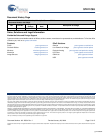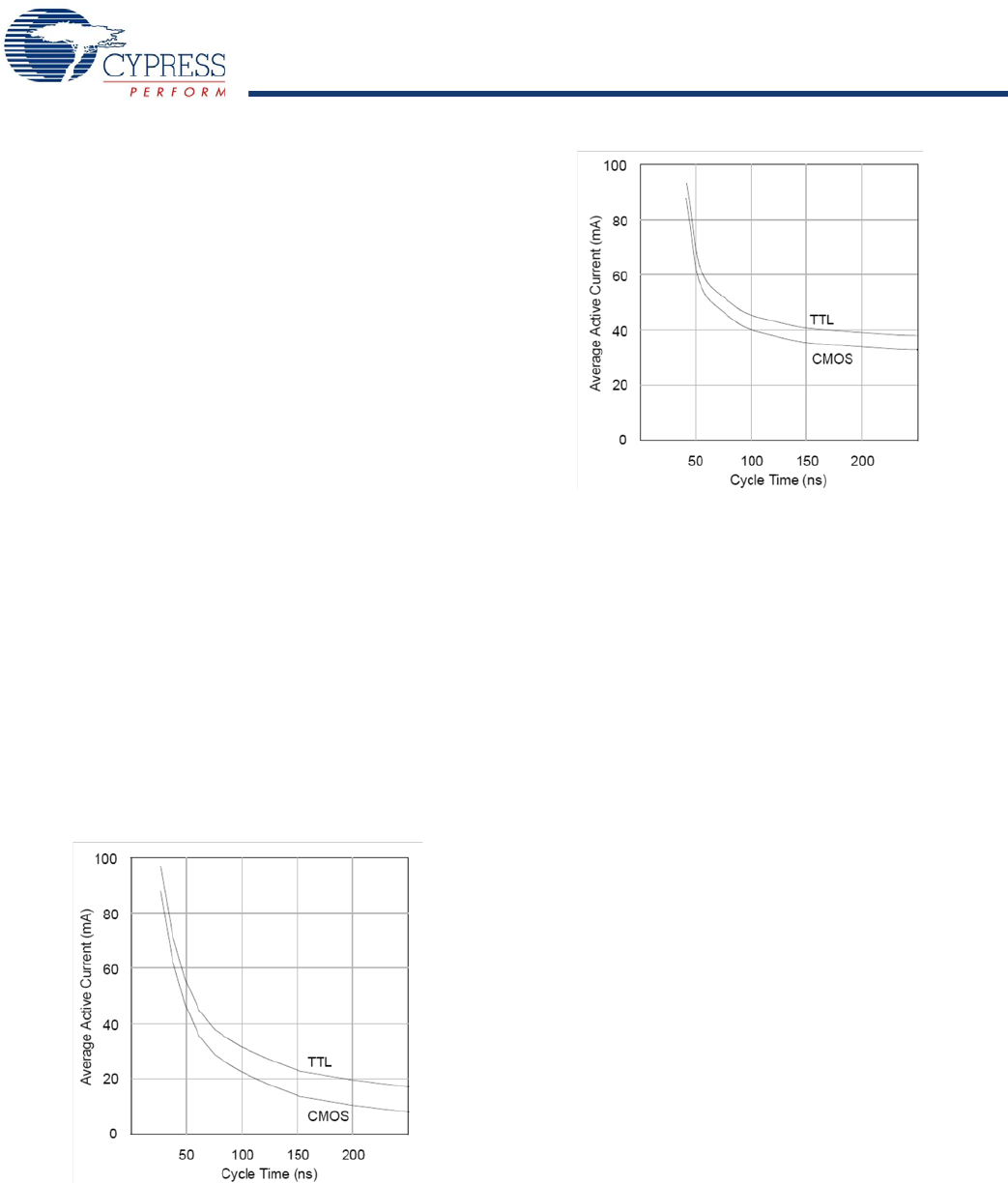
STK11C88
Document Number: 001-50591 Rev. ** Page 4 of 15
Hardware Protect
The STK11C88 offers hardware protection against inadvertent
STORE operation and SRAM WRITEs during low voltage
conditions. When V
CC
<V
SWITCH
, all externally initiated
STORE operations and SRAM WRITEs are inhibited.
Noise Considerations
The STK11C88 is a high speed memory. It must have a high
frequency bypass capacitor of approximately 0.1 µF
connected between V
CC
and V
SS,
using leads and traces that
are as short as possible. As with all high speed CMOS ICs,
careful routing of power, ground, and signals help prevent
noise problems.
Low Average Active Power
CMOS technology provides the STK11C88 the benefit of
drawing significantly less current when it is cycled at times
longer than 50 ns. Figure 2 and Figure 3 show the relationship
between I
CC
and READ or WRITE cycle time. Worst case
current consumption is shown for both CMOS and TTL input
levels (commercial temperature range, VCC = 5.5V, 100
percent duty cycle on chip enable). Only standby current is
drawn when the chip is disabled. The overall average current
drawn by the STK11C88 depends on the following items:
1. The duty cycle of chip enable
2. The overall cycle rate for accesses
3. The ratio of READs to WRITEs
4. CMOS versus TTL input levels
5. The operating temperature
6. The V
CC
level
7. IO loading
Best Practices
nvSRAM products have been used effectively for over 15
years. While ease-of-use is one of the product’s main system
values, the experience gained working with hundreds of appli-
cations has resulted in the following suggestions as best
practices:
■
The nonvolatile cells in a nvSRAM are programmed on the
test floor during final test and quality assurance. Incoming
inspection routines at customer or contract manufacturer’s
sites, sometimes, reprogram these values. Final NV patterns
are typically repeating patterns of AA, 55, 00, FF, A5, or 5A.
The end product’s firmware should not assume that a NV
array is in a set programmed state. Routines that check
memory content values to determine first time system config-
uration and cold or warm boot status, should always program
a unique NV pattern (for example, a complex 4-byte pattern
of 46 E6 49 53 hex or more random bytes) as part of the final
system manufacturing test to ensure these system routines
work consistently.
■
Power up boot firmware routines should rewrite the nvSRAM
into the desired state. While the nvSRAM is shipped in a
preset state, best practice is to again rewrite the nvSRAM
into the desired state as a safeguard against events that
might flip the bit inadvertently (program bugs or incoming
inspection routines).
Figure 2. Icc (max) Reads
Figure 3. Icc (max) Writes
[+] Feedback



